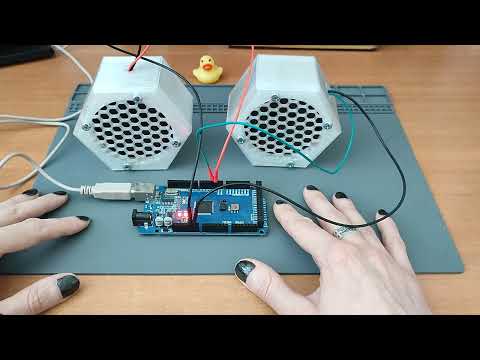Arduino MIDI Atari Paddle Controller

Arduino MIDI Atari Paddle Controller

And, so finally, I've done something that at least hints of being musical with my Atari Paddles.
This shows how to use them as a MIDI CC controller.
https://diyelectromusic.com/2025/06/23/arduino-midi-atari-paddles/
With all the comments about Arduino Opta, and an integrator from Slovakia telling me about his experience with industrial shields PLCs, I must admit I'm curious about this brand and it's capabilities.


And immediately followed by a simpler version, thanks to the observation by @bytex64 that the originals wouldn't have used ADCs at all! :)
https://diyelectromusic.com/2025/06/22/atari-2600-controller-shield-pcb-revisited-part-3/
Just goes to show that sometimes we can't "see the wood for the trees" in some of these things! And we are spoiled by our modern tools.
Was this a #MakerFail ? Not sure. Certainly some learning going on there though :)
My 6yo son and I made a “Cricket in a Can” with bits and bobs we had laying around. A simple gadget and not too pretty, but it chirps like a cricket when you tap the can. His 2yo brother thinks it’s hilarious!
I think this will be a fun little platform for the #kids to learn & play with software to make simple piezo music. 🦗🎼
And now I can properly "properly" read all four paddles.
But that was a lot more complicated than I thought it would be. Even by the standards of my previous "that was a lot more complicated" statement!
Maybe I'm just a bit slow with this one! (or getting old) :)
Anyway, I finally have something I'm happy with. Now to actually do something with it!
(the things one does to avoid cracking open some vintage gear and changing it...)
https://diyelectromusic.com/2025/06/22/atari-2600-controller-shield-pcb-revisited-part-2/
#CyanoStat: An #OpenSource #Arduino-controlled platform for #CO2 regulation in #microbial incubators optimized for #cyanobacteria #cultivation:
-add-on device for off-the-shelf microbial #incubator
-cost: 65 €
https://doi.org/10.1016/j.ohx.2025.e00649
#DIYbio #lab #research #science #instruments #microbiology
Ramin Djawadi, "Game of Thrones" (Arduino cover by avp):
https://www.youtube.com/watch?v=9DGQFEVbdcs
Programmed on a single Arduino Mega 2560 using timer interrupts.
The source code can be found in "examples" directory in the my book repository:
https://github.com/artyom-poptsov/SPARC
I'm working on a chapter in the book that is dedicated to low-level MCU programming. The current goal is to cover enough material to properly explain how to do such projects.

Ok, starting a new thread cuz the last one is old. Since my 286 CPU appears to be dead, I figured while I wait on my next order of 80C286 chips from eBay I thought I'd work on the 386EX board.
Here's where we're at, with the board stripped of components and headers soldered on.
